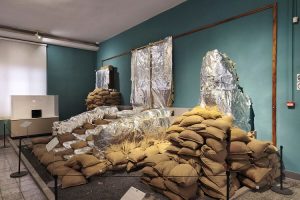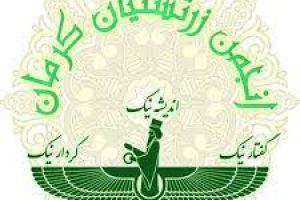Excavations without permission on a historical hot bath in the historical context of Tehran under the pretext of construction have fueled concerns about this site.
In the neighborhood of Nematabad, Tehran, at the end of the alley known as “Amoo Hasan,” there is another alley called “Hamam,” a name that probably comes from a Qajar bathhouse. Now, its historical layers are attached by pickaxes and damaged, with the excuse that a 4-story building is to be built there.
There is a fence around the area where the excavation is going on. Around this area, located in the 19th district of Tehran Municipality, there is no sign giving name of the contractor of the construction and/or any information in this respect. Behind the fence, several wells with a depth of 6 and 10 meters have been dug. Maitham Delfani, a senior expert in archeology, historical context expert, and cultural heritage activist, who has made images of these excavations available to ISNA, suggests, based on his observations that excavations are being carried out on the structure of a historical hot bath.

This expert of historical contexts told ISNA: When a building is under construction, a plaque is usually installed near it, with the information of the contractor and the structure recorded on it, but such a plaque is not seen around this area, which is undergoing unauthorized and suspicious excavations. Although the people working there said that they had a construction permit from the municipality and that a four-story building would be built, they did not have a license from the cultural heritage. The excavated area is located near the historical castle of Nematabad and in the historical context. The spot being excavated, according to the locals, was a historical bathhouse in the past. Under these conditions, any operation in such contexts will require a permit of the Cultural Heritage Department.

This expert on historical contexts and an activist of Tehran’s cultural heritage said about the dug wells: “Several wells inside the fenced area have been drilled; one of the wells is filled with garbage and it seems that it did not reach a historical layer. Another borehole was drilled, and a well was dug to a depth of more than 10 meters, inside which a room has been dug and an air evacuation device has been installed at a distance from the well. A layer of asphalt has already been laid on the bed of that area, under which the historical layers are visible. Around these wells, 20 x 20 bricks can be seen, which were removed during the excavation.
This cultural heritage activist said: The evidence and statements of the people who worked there show that unauthorized excavation is taking place in the historical and ancient layers of Tehran; that is why I brought the issue to the attention of the cultural heritage of Tehran and the director of the historical context of Tehran Municipality with documents. It was decided to carry out the necessary examinations, but there has been no news about the studies and the response of the cultural heritage.
Delfani said: “observations and evidence show that no construction work is being carried out in that area. What does exploring two wells in the middle of a historical site mean? What does it mean to destroy ancient layers? Bricks and all the historical layers have been destroyed; it is not believed that urban construction is involved.
The pictures and video published in this report were made available to ISNA on Sunday, Shahrivar 13th, and the historical contexts committee of Tehran Municipality and the Cultural Heritage Department of Tehran were notified accordingly, but the news was not to be published before having results of investigations on permits, etc. Upto this date no news of the results has been announced yet.










